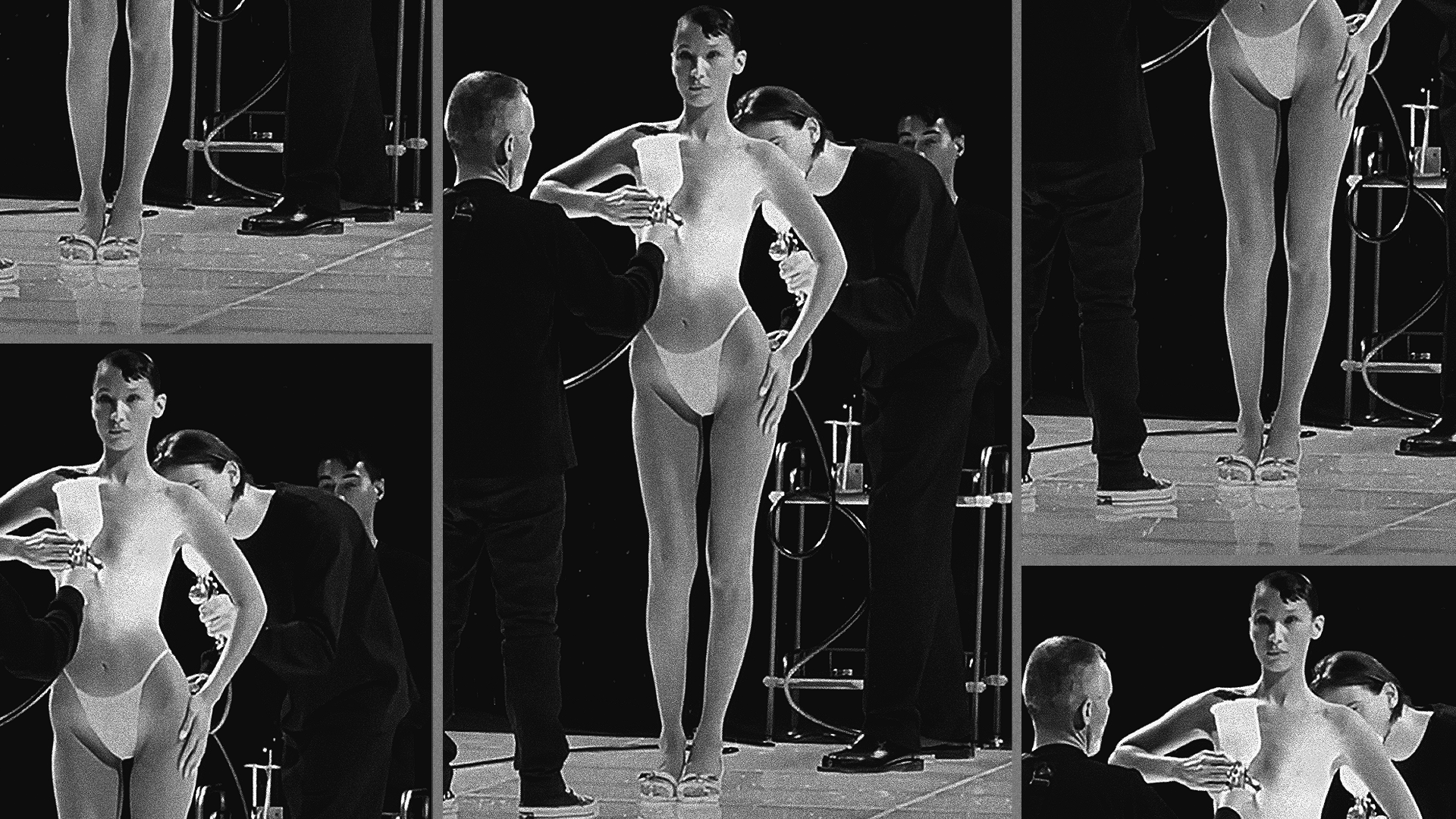Proving just how far fashion’s relationship with tech has come in recent years, a viral video of Bella Hadid being sprayed into a dress marks the next step in environmentally-friendly fabrics.
For the last few weeks, as models have sauntered down runways in the fashion capitals of the world, online commentary about the offerings presented by designers both burgeoning and iconic has been rife.
From criticism towards Kanye’s controversial ‘White Lives Matter’ t-shirt to praise surrounding the running-theme of Bridgerton-esque collections, the public’s response has been a mixed bag.
Nothing has drawn more attention, however, than a video of the closing look from Coperni’s show in Paris, which has been making the rounds since Friday night.
Featuring the widely-adored Bella Hadid, it displays the supermodel stood in nothing but flesh-coloured underwear as a team of people dress her in real-time.
Not in clothing, that is, but in a misty liquid called Fabrican, which almost instantly transforms into a wearable material when sprayed onto her body before the live audience.

Developed by Spanish scientist Manel Torres in 2003, the silly string-inspired textile is made up of natural and synthetic fibres that are suspended in a polymer solution.
Only becoming solid when it makes contact with a surface after being evaporated, Fabrican’s stylish debut is being touted as the pinnacle of fashion’s integration with technology, which has been blossoming for several decades.
Yet what appears to have struck some viewers the most isn’t the obvious wow-factor of such a creation, rather the sustainability potential of a fabric so malleable.
Because that’s the thing. Fabrican doesn’t just appear in an instant, once it’s been worn, it’s strong enough to be removed, hung, washed, and put back into the bottle of its original solution to immediately regenerate ready for reuse.
It can also be used to customise or repair garments and has already been introduced to the healthcare sector for the production of face masks, protective garments, casts, and bandages.
View this post on Instagram
‘Fashion designers need new materials and fabrics to create products to address evolving lifestyles and consumer demands,’ said Sébastien Meyer and Arnaud Vaillan (the brains behind Coperni).
‘In the 21st century we should make it the first time that science and design really march together in close step, illustrating in this way their interdependence.’
With its additional green credentials (Torres is striving to close the loop by working solely with organic compounds), Fabrican is indeed promising.
But is this simply another gimmick or is Bella Hadid on course to becoming the face of the next frontier in environmentally-friendly fabrics?
We’ll have to wait and see.

















